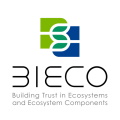Ontology Manager Tool
Coordinated by
CNR
Ontology Manager is a Framework responsible for managing the Core Ontology used in BIECO, called DAEMON. It aims to support organizing concepts and their relationships related to System of Systems (SoS), Internet of Things (IoT), and System Components management and Monitoring.
Description
February 2023Describe the innovation content of the result:
Ontology Manager allows for managing knowledge about SoSs and systems components and specifying meaningful monitoring rules.
Who will be the customer?
Public and private Companies using SoSs and complex ICT systems aiming at representing and managing the ICT related knowledge in a user-friendly way, also for monitoring purposes.
What benefit will it bring to the customers?
A structure and comprehensive organization of the knowledge about the SoSs and systems components for facilitating the comprehension of their complex systems allowing them to define specific monitoring rules.
When is the expected date of achievement in the project (Mth/yr)?
July 2023
When is the time to market (Mth/yr)?
At the end of the project
What are the costs to be incurred after the project and before exploitation?
After finishing BIECO, Ontology Manager will be ready for use without further investment. However, further research, based on it, will need to be framed on other innovation projects. Currently, CNR is already
taking proactive steps by proposing the utilization of Ontology Manager in the SERICS (Cod. PE00000014)
and RESTART (Cod. PE00000001, CUP B53C22003970001) projects under the NRRP
MUR program, which is funded by the EU-NGEU.
What is the approximate price range of this result/price of licences?
Open Source
What are the market size in Millions € for this result and relevant trend?
According to An Artemis-IA Whitepaper “From Internet of Things to System of Systems”9, the market related to integrated systems, SoS, applications, and solutions will grow from €500 billion in 2016 to €3.9 – €11.1 trillion in 2025.
How will this result rank against competing products in terms of price/performance?
We have defined a specific ontology aiming at collecting SoSs knowledge and Monitoring knowledge in a unique framework, differentiating this result from the existing security solutions.
Who are the competitors for this result?
Other semantic web Ontologies aiming at organize the knowledge about the ICT systems.
How fast and in what ways will the competition respond to this result?
Integrating Monitoring and SoSs knowledge into a unique ontology is not straightforward. We estimate that modeling the Monitoring and SoS domains in a unique, well-defined ontology and user-friendly framework aiming at managing that knowledge takes at least one year and a half.
Who are the partners involved in the result?
CNR
Who are the industrial partners interested in the result (partners, sponsors, etc.)?
RESILTECH
Have you protected or will you protect this result? How? When?
Ontology Manager and the underlying Ontologies have been presented in different international conferences and journals.
Other results
Security Testing Tool
GdpR-based cOmbinatOrial Testing (GROOT) is a general combinatorial strategy for testing systems managing GDPR’s concepts (e.g., Data Subject, Personal Data or Controller).
Domain Specific Language
The domain specific language enables specification of digital twin behaviour in a manner that can enable a predicted evaluation of its trustworthy behaviour in a simulated environment
Fail-operation clock synchronization methodology
Synchronization loss can occur due to many reasons, either because of a device or link failure or due to a targeted attack on the reference node, which supplies the corrected time to the network’s nodes.
Time sensitive network simulation
Simulate the real time communication for the distributed based on the Time sensitive network simulation. Additionally, simulate the fail-operation clock synchronization methodology. This simulation will validate the communication stack.
Remote updating- upgrading of vehicle firmware
Securing remote and in-vehicle communications against cyber-attacks, possibly performed with quantum computers in the near future, is a major goal in the automotive sector.
Extension of the approach to the communications within the whole supply chain of the Microfactory
Once the secure communication with a vehicle has been demonstrated for remote FW update, it is straightforward to extend it to a general Service-Over-the-Air architecture and even further.

